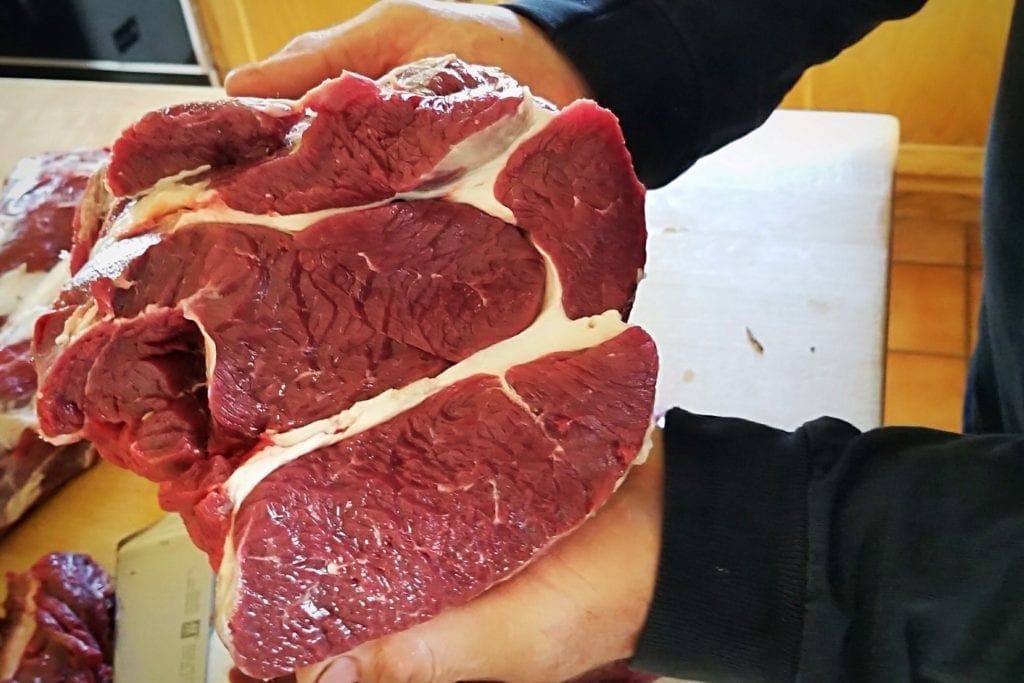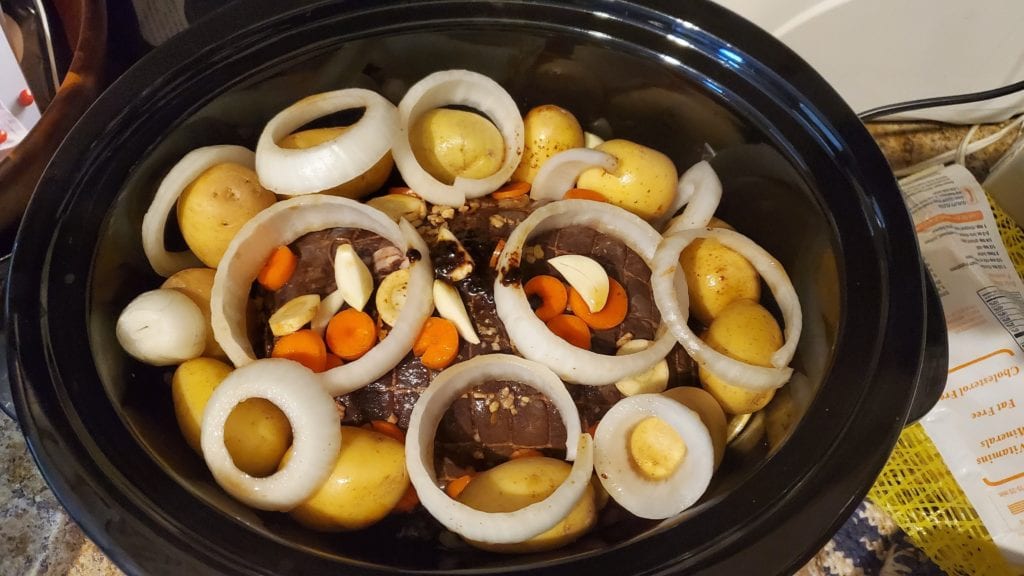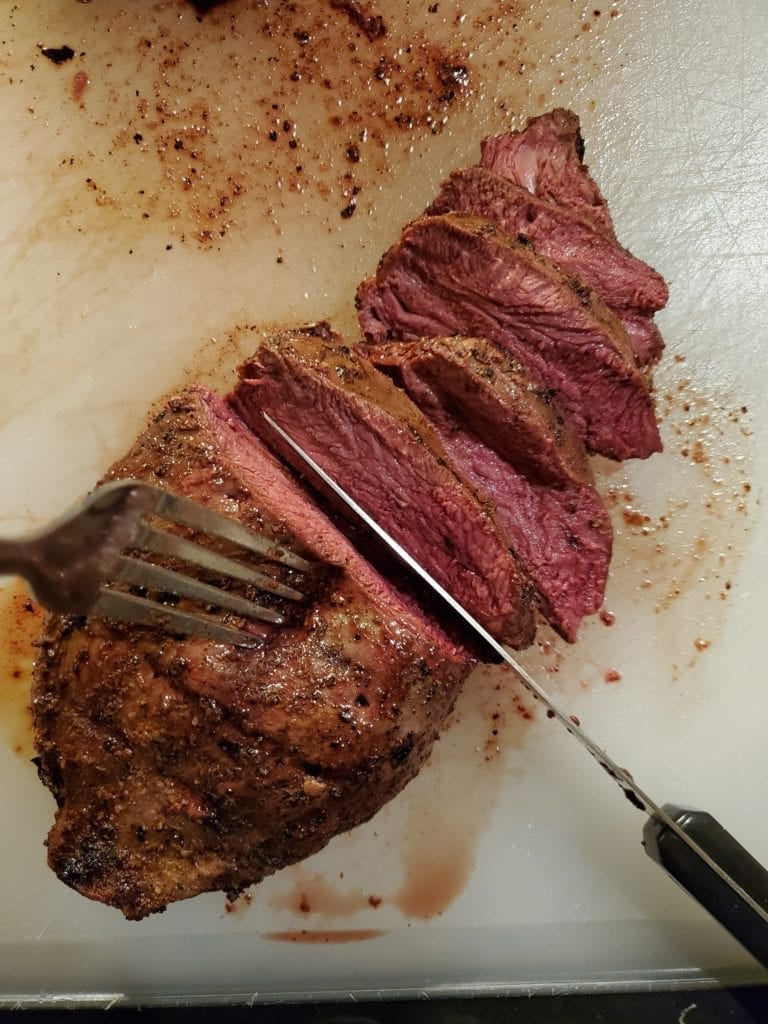Looking for the inside scoop for serving tender wild game?
All animal protein, wild or domestic, has several types of connective tissue in the muscle. The two most common are elastin and collagen. Elastin forms the silverskin, a fibrous tissue that surrounds the entire muscle. It will never break down and the longer you cook it, the tougher and more leathery it gets. Collagen, however, sheaths muscle fibers together making what you can visibly see as the “grain” of meat. Raw, it is quite tough. But unlike elastin, it can be melted away when cooked.

Cooking animal protein you buy from the store is easy. Follow simple instructions and general cooking times and you win every time. This is because these animals are selected based on genetics to provide a uniform cut of meat. These animals are raised in similar conditions, are not stressed in their living situations, and are slaughtered at the same age consistently. The perfect cut of meat is repeatable time and time again.
Looking for new wild game recipes? Get our downloadable with 10+ recipes today.
Game meat is different every time. You don’t know how that animal’s life was until you see it seconds before you kill it. You don’t know how stressful this season or any season has been. You don’t know exactly how old it is. You don’t always know if it is sick. Are there old wounds beneath the hide? What has that animal been eating? And a plethora of other things that could be good or bad for how those muscles will play out on your palette.
The more a muscle is used, the tougher it becomes. They don’t call a tenderloin tender for no reason. All tucked up there below the spine inside the guts, never working but a few days in its life. Pheasant breast? They never use them. But those thighs! Tasty for sure but they do take longer to cook.
How do you get tender wild game meat each time? It is a process and it starts the moment you kill an animal.
Birds
Clean the birds as soon as you can after shooting. If you have the ability to, age them. Age young birds for 1-2 days in an airtight container with a damp towel in the fridge. For older birds, increase this time to 4 days. Then store as you normally would.
In the cleaning process or pre-cooking process, remove as much of the leg tendons as you can before marinating and cooking. These “dark meat” cuts can take much longer to cook than breasts due to the nature of leg and wing muscles being constantly in use.
Big Game
You do not have to hang or age it before you cut and eat it.
If you do hang and age it at the correct 34-37*F temperature for a few days, be sure the meat is in a clean environment and there is no chance for temperature fluctuations. Seven days should be your maximum, but some people will tell you three to four weeks. The longer your carcass hangs, the more meat you lose as the outer layer develops a dry cap that you will just cut off and throw away.
Ambient temperature, humidity, and the region you live in will play a role in how you field dress. Removing the guts does not cool off the meat any faster than using the gutless method where you remove the skin, quarters, and edible portions from one side at a time on the ground. Bone-in quarters will spoil a lot faster than deboned cuts. Your pack-out situation will determine how much time you spend on this process.
If you hunt in late summer or early fall when it is still hot, a skinned quarter in the shade, with adequate airflow, is enough to prevent spoiling the meat. Be sure to keep flies and other bugs off of the meat with porous game bags.
Back at camp or at home, be sure to remove all of the silverskin. Remember, silverskin is elastin and will not break down when cooking. If it is not removed, this layer can prevent seasoning from getting into the meat. It can also cause uneven cooking.
Remember that your game meat is inherently leaner than domestic livestock and finishes to a medium-rare at a much lower temperature than beef or pork.
Cooking Wild Game
If you’ve ever smoked a large cut of meat, you know what meat stall is. Meat stall happens when you cook large cuts at low temperatures over a long period of time. Evaporative cooling takes over inside the smoker or oven and once your meat hits a certain temperature, it stops “cooking” and the temperature will not rise. For domestic livestock, the internal temperature at meat stall is between 150 and 170 degrees Fahrenheit. On an elk roast, for example, it is between 110 and 120 degrees Fahrenheit.
Some people will try to avoid meat stall by cooking hot and fast. If you cook collagen too fast, it will toughen the meat so fast and never get back to that tender meal you wanted. The same thing can happen with your steaks or tenderloin pieces. Cook them at too high a temperature for too long and you’ll end up wearing your jaw out.
Ideally, no matter the cut of wild game you’re cooking, you’ll want to bring it up to around 130*F, remove it from the grill and let it rest covered with foil. It will rise to the perfect temp of 140 degrees. 160 is the maximum temperature you want game meat. If you have a tough cut of meat to begin with, that collagen will break down at 160 degrees.

Always bring your cuts to room temperature before you cook them. Season them ahead of time, 30 to 60 minutes, and then season again before putting them on the grill or in the oven. If you marinate, an acid-based marinade such as tomato, lemon, alcohol, vinegar, or Italian dressing will help start the breakdown process of all the connective tissue in the meat.

If you don’t do the butchering yourself, ask your butcher to select cuts for you based on how they think your harvest appears and handles. Try something other than just ground meat. There are so many more ways to enjoy your game when you spend a little time learning how to prepare it.
If you’re out of ideas, two of my favorite people to follow and get ideas from are Hank Shaw and Jeremiah Doughty.
